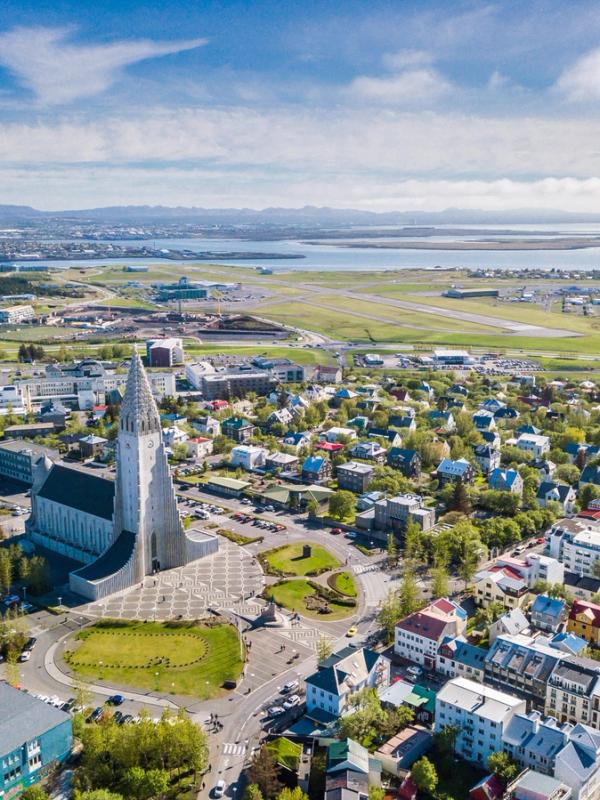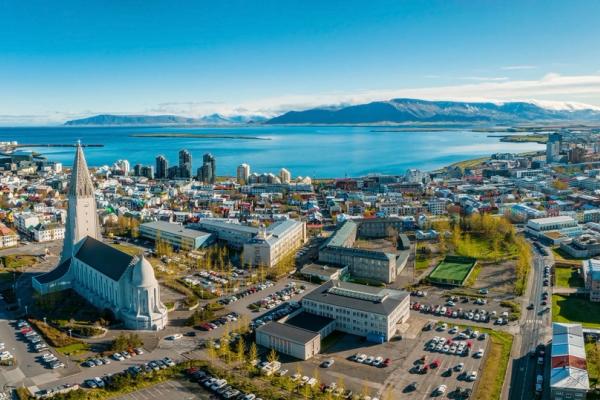
The Ultimate Guide to Reykjavik
Have you booked your campervan already for your Icelandic adventure? Most travelers will leave at least a day or two before or after their trip to explore Reykjavik, the country's capital.
With a small population, you might think that there’s not a lot to see or do in this city. But despite its size, Reykjavik is a vibrant city filled with interesting sights, architecture, experiences, and great food. Whether you're exploring the city's rich history and culture, savoring traditional Icelandic cuisine, or simply seeing where the city takes you, you’ll no doubt fall in love with Iceland’s quirky capital.
In this article, we'll examine some of the best things to see and do in Reykjavik, including exploring the city, trying local food and drink, and experiencing its unique culture and nightlife. Let’s dive in!
Reykjavik: The Nuts and Bolts of Iceland’s Capital
- Population: ~140,000
- Location in Iceland: Reykjavik is in the southwest of Iceland, nestled on the coast.
- Airports: The international airport that services Reykjavik is Keflavik International Airport (KEF), which is located on the Reykjanes Peninsula, approximately 45 minutes from the city. The domestic airport (RVK) is within Reykjavik, with links around Iceland and occasional flights to Greenland or the Faroe Islands.
- Electricity: 230V and 50Hz
- Time Zone: GMT
- Currency: Icelandic Krona (ISK).
- Topography: Reykjavik is located on a peninsula surrounded by mountains, with a mix of rocky hills and flat land in the city center.
- International Dialing Code: +354

Exploring Reykjavik
One of the best ways to explore Reykjavik is on foot. The downtown area is entirely walkable, making it easy to see all of Reykjavik’s most famous landmarks and attractions. Whether you jump on a walking tour or decide to wander around yourself, you’ll quickly get the lay of the land and get a feel for the local culture of Reykjavik.
Of course, one of the most iconic landmarks in the city is Hallgrímskirkja, a towering church that dominates the city skyline. It’s one of the central areas of the city, sitting up the top of the interesting street Skólavörðustígur. The architecture was inspired by the basalt columns found around Iceland; we recommend taking the elevator to the top of the tower for great views over the city and surrounding landscape.
Another must-see attraction in Reykjavik is the Harpa Concert Hall, which is known for its stunning architecture and as a home to the best live classical music shows, theatre, comedy, and more. Perched on the edge of the water next to the harbor, you can enjoy the immensely rewarding views across the bay toward Mt Esja, which is considered a big part of Reykjavik’s skyline. It’s free to wander around inside the building, but to get a glimpse of the actual concert halls inside, you’ll either need to join a tour or buy a ticket to a show.
For a more relaxed experience, take a stroll around Tjörnin Lake, which is in the heart of the city. This picturesque lake is home to a variety of birds and is surrounded by beautiful parks and gardens.
As you explore Reykjavik, look for the city's many colorful street art and murals. These works of art add a bit of an alternative edge.
Food and Drink in Reykjavik
No trip to Reykjavik is complete without trying some of the local cuisine. Iceland has a unique culinary tradition, and the capital city is home to a variety of restaurants and cafes where you can sample some of the country's most famous dishes.
Traditional Icelandic food is strange – most of it was fermented, pickled, or dried to conserve it over the long winters. It’s not so popular with Icelanders today, but you can still try a lot of it. Many travelers will be tempted to sample hákarl or fermented shark meat. While it may not be to everyone's taste, hákarl is a unique and memorable culinary experience that will leave a lasting impression. You can sample some at Íslenski Barinn in downtown Reykjavik.
Modern-day Icelandic foods are much more palatable; we recommend trying Skyr, a type of yogurt that’s high in protein and low in fat. It also makes for a perfect snack on your Iceland campervan road trip. Then there’s the delicious lamb, which might sometimes be smoked, and, of course, plenty of fresh seafood as well. A big part of modern-day Icelandic cuisine is the country’s soups (langoustine, fish, or meat), perfect for those blustery Icelandic days.
Coffee is also a big part of Icelandic culture, and there are many local coffee shops and bakeries where you can enjoy a cup of coffee and a pastry in Reykjavik. Try visiting the famous Mokka-Kaffi, a coffee house that has been a Reykjavik institution since 1958, or head to Brauð & Co, a popular bakery that serves fresh bread and pastries (the cinnamon scrolls here are second to none!).
Finally, Reykjavik is catching up fast with the rest of the world regarding craft beer. Many bars and restaurants across the capital offer a great selection of local beers made using unique local ingredients, such as birch or arctic thyme. For the best, though, head to Micro Bar or Skúli Craft Bar, both craft beer specialists.
Culture and Nightlife
Reykjavik is a city that is rich in culture, and you’ll surely be tempted by the city’s museums and galleries. The National Museum, for example, provides a detailed overview of Iceland’s history, culture, and development into the nation you see today. Meanwhile, the Reykjavik Art Museum features a collection of modern and contemporary works from both Icelandic and international artists.
Then, there are the museums dedicated to Iceland’s spectacular natural environment. The Wonders of Iceland exhibit at the Perlan is a world-class look into the volcanoes, glaciers, and geological makeup of Iceland. Whales of Iceland is also a top choice, where you can discover everything you want to know about the gentle giants of the sea.
In addition to its cultural offerings, Reykjavik is also known for its buzzing nightlife. The city is home to a variety of bars, clubs, and music venues, and there's always something going on after dark. We love the Kex Hostel, a popular hangout for locals and travelers alike that features live music, DJ sets, a laid-back atmosphere, and fantastic food.
For a more upscale experience, head to the Slippbarinn at the trendy Icelandair Hotel Reykjavik Marina. This chic bar offers a great selection of cocktails, as well as stunning views of the harbor and surrounding landscape.

Conclusion
Reykjavik is a unique and fascinating city that offers visitors a wealth of experiences and attractions. From its stunning natural landscapes and vibrant culture to its culinary scene and bustling nightlife, there is something for everyone to enjoy in this vibrant capital city.
Ready to book? Browse our range of campervans, and you’ll be enjoying Reykjavik in no time.





